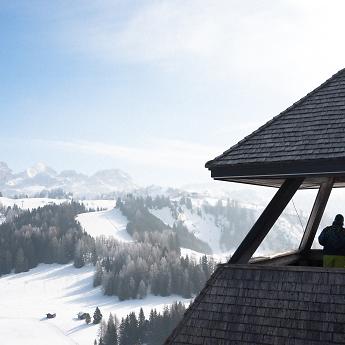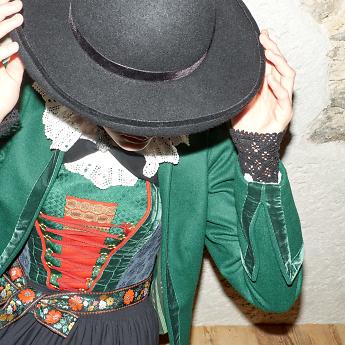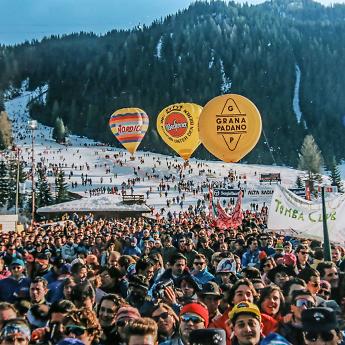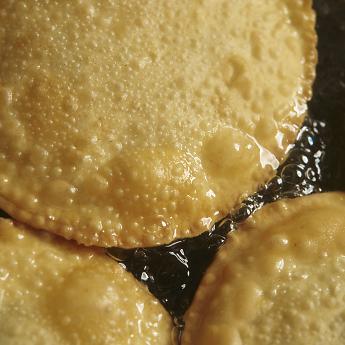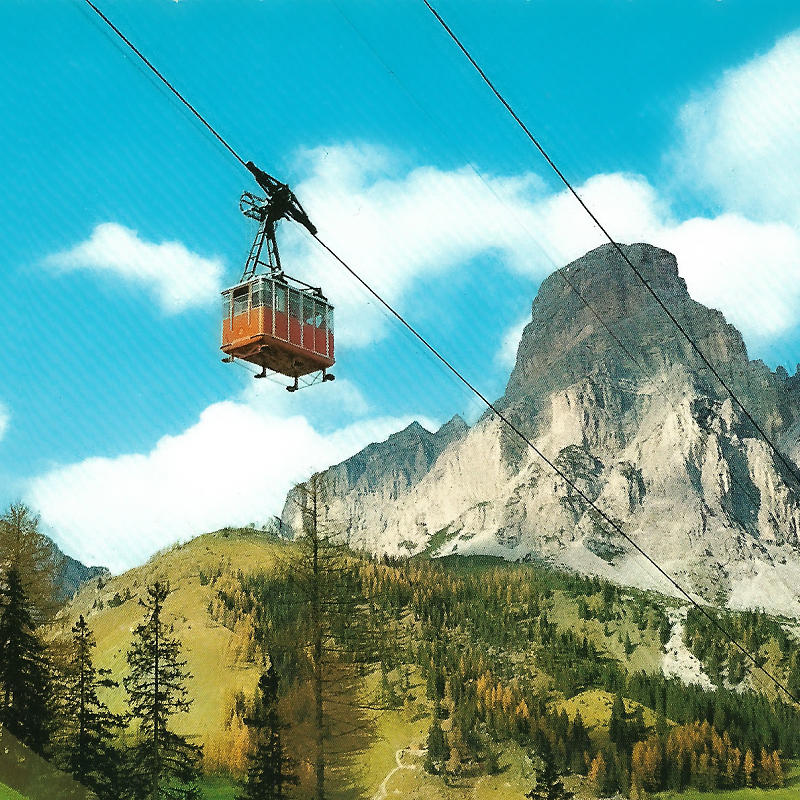
Beautiful summer
A short history of summer tourism
The sun shines high in the crystal-clear blue sky and a few timid, white clouds act as a counterpoint, the pinnacles of Sassongher, Col Alt, Sas dla Crusc, Piz Boè, Lavarela and Conturines smile down from above with their iridescent beauty, the meadows are an almost phosphorescent green and the air is clear, warm yet pleasantly crisp. Summer has arrived, up here in Alta Badia. The holidays have just begun and the list of things to do, see, explore, discover among wild peaks, gentle valleys and welcoming villages is endless.
And yet, once upon a time, this was certainly not a place for holidaymakers. The peaks were inhospitable, the valleys impenetrable and the villages were poor and isolated from everyone and everything. However, the people here have always rolled up their sleeves and got stuck in, firstly with the hard work in the fields, and then later in inventing forms of hospitality to escape from poverty. The extraordinary and unparalleled beauty of these places was a gift that many would have appreciated, and when the inhabitants of Alta Badia understood this, just a little later when compared to the neighbouring valleys, they didn’t stop for a minute. The result? The beautiful summer up here, (the so-called “Sommerfrische”, or “escape” from the hot cities to the cool of the mountains), became a wish that could be fulfilled, a dream come true and a delightful season during which valley dwellers and guests could enjoy the wonder of peaks, valleys and villages together.
Courageous explorers, curious explorers
Around the mid-1800s, the first to enter this still deeply isolated and secluded valley, were – as elsewhere in the Alps – geologists, explorers and finally mountaineers, mostly English, who despite the difficult conditions surrounding the place, could not resist the call of the still untouched heights of the Dolomites. Among the first to introduce them to Alta Badia was Giovanni Battista “Tita” Alton, originally from Colfosco, an eminent professor of languages in Prague, Vienna and Rovereto, author of authoritative texts on the Ladin language and culture and founder, in 1866, of the “Ladinia” section of the German and Austrian Alpine Club. When he returned to his homeland for summer holidays, Tita often brought friends from the big European cities with him. “The isolation and solitude of Val Badia are interrupted only for a short period during the summer by the few tourists who get lost there…” wrote Alton.
Some, however, even during the first half of the 19th century, came in the summer from the nearby valleys to bathe in the phosphorous springs, but certainly this was nothing compared to other South Tyrolean spas, which were already much more developed at the time.
Even John Murray, the author of the famous “Handbooks for Travellers”, first-generation travel guides, passed through the valley, dedicating a few pages to it in his book. Then there were Josiah Gilbert and George C. Churchill, among the first to explore the Alps and best known for having “coined” the name Dolomites in their volume “The Dolomite Mountains”, who visited Corvara, San Leonardo and San Cassiano. The writer and traveller Amelia B. Edwards also arrived in Corvara in 1872. In her valuable account of her “midsummer wanderings in the Dolomites” entitled “Untrodden Peaks and Unfrequented Valleys”, she also tells of her stay at the Rottonara Hotel (today’s Hotel Posta Zirm): “The small inn consists of two buildings, an old one and a new one. The latter is reserved for first-class travellers and has neither rooms reserved for the public nor a kitchen. The new house exudes the sweet, fresh smell of white pine with which the floors, walls and ceilings of all the rooms on the upper floor are covered. The rooms on the ground floor have recently been plastered and painted white”.
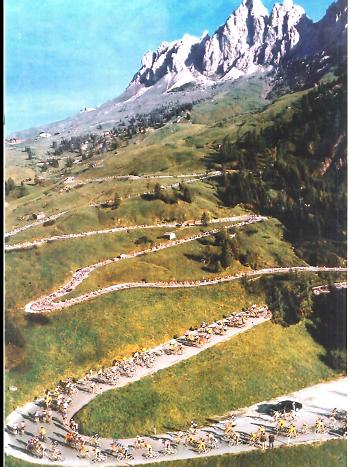
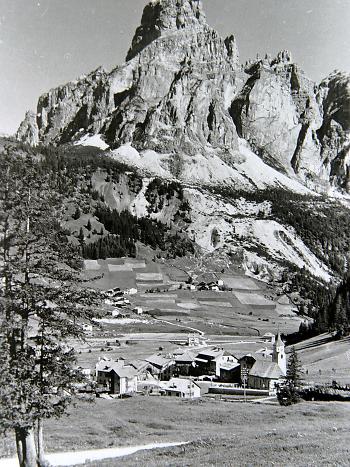
Inventing the future, together
In just a few lines, Edwards manages to create an early portrait of Ladin hospitality, still spartan at the time, but certainly already warm and attentive. A few inns and guest houses began to welcome the first intrepid travellers, but it still took a long time for the valley to become as successful as it is today. There were no roads to get there, no electricity for light and heat, no piped water... “we all lived very much day to day” remembers Paul Pizzinini, historic manager of the Hotel Rosa Alpina in San Cassiano “but when something was needed, we all got together to do what had to be done. We divided into small groups, all of us working hard, we built roads and power plants, aqueducts and ski lifts”. Between the end of the 19th century and the 1960s it all happened at breakneck speed (the Alta Badia brand also first appeared in 1963), and looking back at it today it seems incredible, yet it was purely thanks to the determination of the inhabitants and their desire to invent their own future, that the time between past and present was so short. Some visionary characters in particular were fundamental in this development. The farmer and skilled craftsman Jakob Kastlunger comes to mind, who thanks to an idea by the aforementioned Alton and the initiative of the “Bamberg” section of the DuÖAV (the German and Austrian Alpine Club) grabbed the opportunity to earn in one summer what he would otherwise have earned in 10 years and built the first refuge, the “Bamberger Hütte” (now the Rifugio Boè) at the foot of the Boè peak in 1894. This was followed by others, all designed to welcome mountaineers and explorers to the magnificent Dolomite peaks. After Kastlunger there was Franz Kostner from Corvara (who together with his brother-in-law also built the first power plant in 1926) and Peter Videsott from Piccolino, who started the first transport company in the valley in the 1920s. Then there was Erich Kostner, who had set his heart on installing the first chairlift to Col Alt, thereby definitively changing the prospects of the area not only in terms of winter ascents on skis, but also during the summer, allowing more and more holidaymakers to go up into the mountains and enjoy them, even from above. We should also remember the many hoteliers who by putting their hands, hearts and souls into their homes were able to transform an idea of mountain hospitality into an art form recognized by guests from all over the world. Among these, the owner of the Hotel Cappella in Colfosco, Renate Kostner Pizzinini deserves a special mention. Born into a family of hoteliers, passionate about the mountains and a courageous, independent and enterprising mountaineer, not to mention being the first woman in her village to get a driving license, Renate began her adventure in tourism by working during the season in a small souvenir shop. When her father died prematurely, Renate took over the management of the family hotel together with her mother and sister at just 23 years of age. After marrying Giuseppe “Pepele” Pizzinini, at the end of the 1960s she decided to enlarge and modernize her modest Hotel Cappella, transforming it into one of the most modern, best known and attractive structures in the valley.
In praise of holidays
“Guests used to stay here for longer, at least a couple of weeks, some a month or even more, with the idea of spending the summer in a cool place surrounded by nature” recalls Andy Pertot, a hotelier in San Cassiano and president of the Alta Badia Brand. “Some families would arrive in a tiny Fiat 500, all cramped but happy, then they would leave the car at the hotel and travel around on foot, going for gentle quiet walks or picnics in the open air, so as to enjoy the landscape in a relaxed way.” During the years of the post-war tourist boom, it was this holiday that began to fill Italian summers, and it was very different from today’s vacations, which are often – alas – much shorter. Richard Pescosta, owner of the Hotel Sassongher in Corvara, also fondly remembers those years between the 1960s and 1970s.
“We had a lot of good times here in the hotel. The guests became friends and we used to spend hours having fun together, sharing evenings and dance parties. We had 4 bars which were always full, and which attracted guests because they could share experiences and socialise after days spent outdoors. Year after year the families returned and the personal bond became stronger and stronger”. Then, with the passing of time, the children and grandchildren of the holidaymakers continued to return, a clear indication that the beauty of the valley and Ladin hospitality have never ceased to enchant.

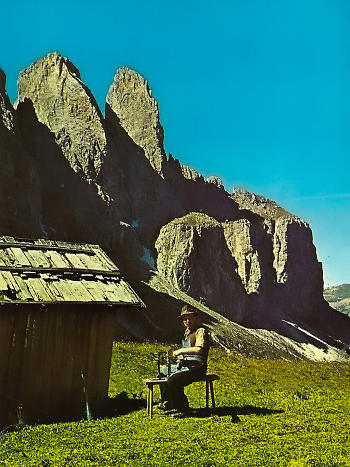
An increasingly active summer
It was precisely during those flourishing and lively decades that a notable change of pace came about in the local mentality. From being predominantly agricultural in fact, the Alta Badia economy moved decisively towards hospitality, which gradually became increasingly important. It also led to the introduction of new proposals and ideas for enjoying a summer holiday up here to the fullest. To celebrate its 10th anniversary in 1987 for example, some members of the “Alta Badia Cycling Society” organized the first Maratona dles Dolomites. Initially an event for enthusiasts, the marathon - which winds through the incredible curves of the roads nestled among the Dolomites – is today one of the most popular and best-loved summer events for cyclists from all over the world. And so, from panoramic rides, high altitude excursions, the arrival of gourmet cuisine and the perseverance of traditional Ladin events that constantly involve residents and guests, summer life in Alta Badia has gradually become richer, livelier and ever more active. The sun shining high in the crystal-clear blue sky with the clouds acting as a counterpoint, the smiling Dolomite pinnacles, the almost phosphorescent meadows and the clear, warm yet pleasantly crisp air are the setting for its long days, which welcome all those who love to spend their beautiful summer here with open arms.
Anna Quinz is the creative director and co-founder of the franzLAB communication studio and publishing house, along with franzmagazine.com, a contemporary Alpine culture magazine. She has been involved in territorial marketing and publishing for many years with a particular focus on the re-narration of mountains and Alpine tourism.
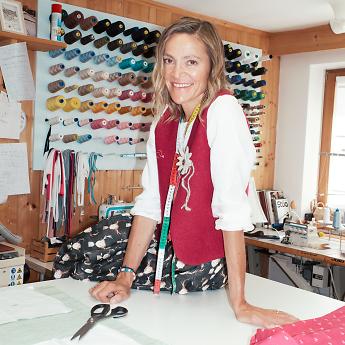
Intervista con Anita Vittur, stilista, sarta di abiti tradizionali, maestra di sci e spirito libero
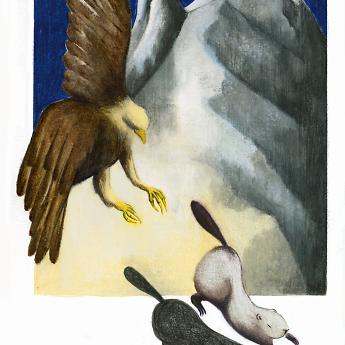
Legends that need to be read



































